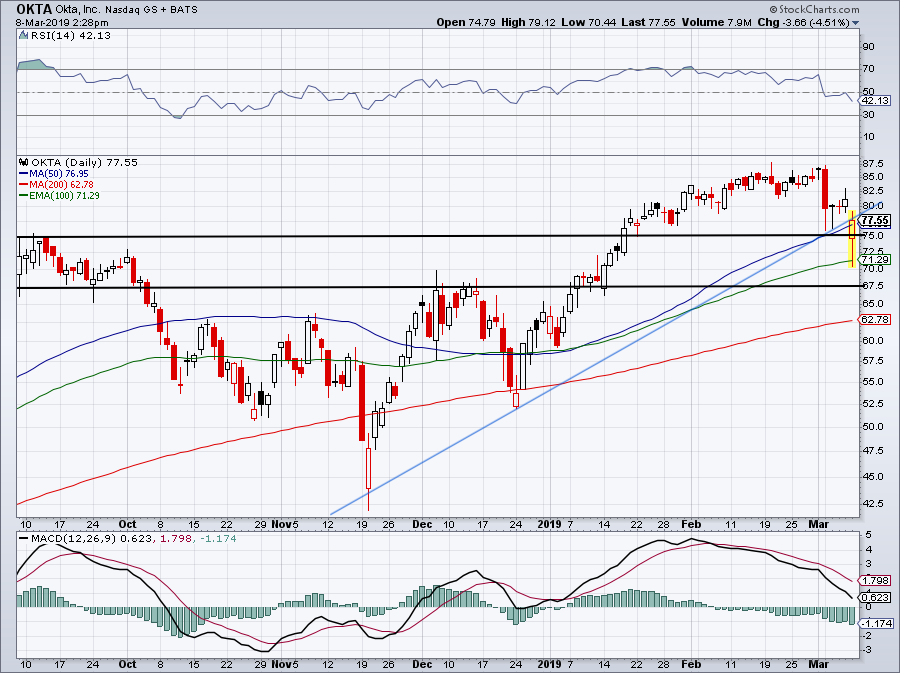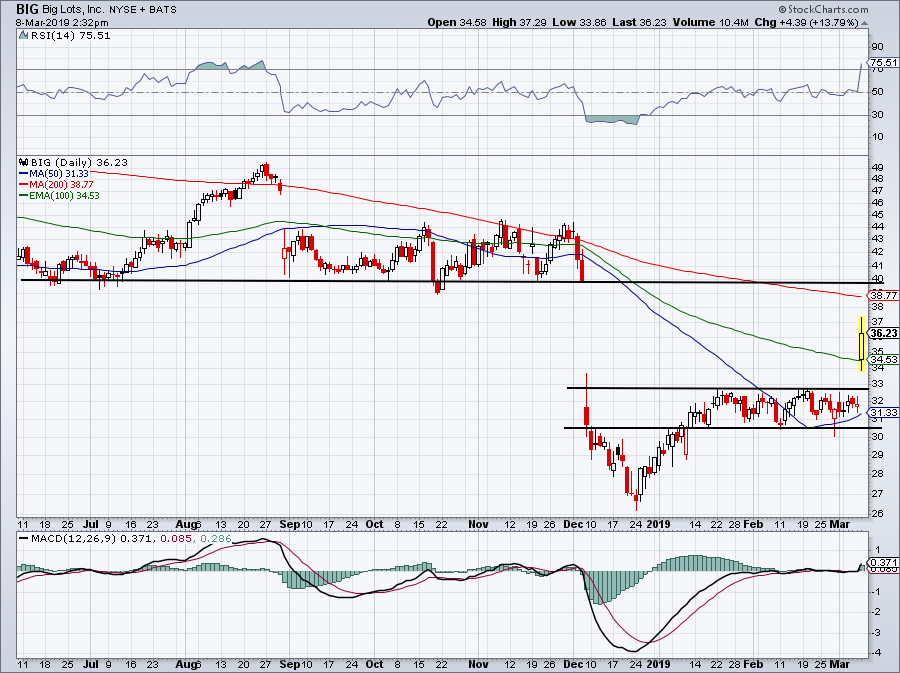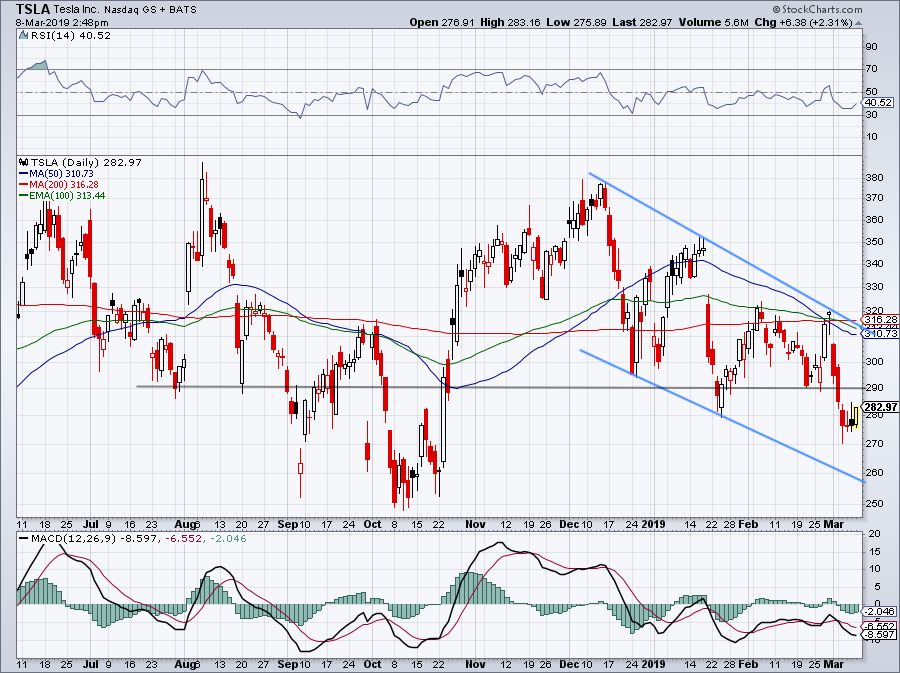A CNN headline reads: "$8 million in assets - and can't get a mortgage." If banks don't lend money to prospective homeowners with uncertain earnings potential -- even if they're sitting on valuable assets -- should you invest in a company with uncertain earnings potential simply because it's sitting on a cash pile? Enter First Solar (NASDAQ:FSLR). As of Q4 2016, FSLR is sitting on cash of $1,955M with very little debt ($188M). Therefore, at a current market cap of $2,770M, FSLR has a price/cash ratio of 1.43. To put this in perspective, a price of $18.75 would put FSLR on sale for -- in the language of some bulls -- "free."
Why, then, has FSLR dropped from $60 to $26.54 in one year, precariously approaching its "free" price? The same reason you can't get a mortgage simply because you have a giant bank account: Cash means nothing vs. the possibility of weak future cash flows. And weak future cash flows is the fear du jour for FSLR, which has seen its cost-leading technology lose out to a massive economies-of-scale strategy by Chinese producers such as Trina Solar (NYSE:TSL), JinkoSolar (NYSE:JKS), and Canadian Solar (NASDAQ:CSIQ).
Top 5 Tech Stocks To Invest In 2019: Magic Software Enterprises Ltd.(MGIC)
Advisors' Opinion:- [By Motley Fool Transcribers]
Magic Software Enterprises Ltd (NASDAQ:MGIC)Q4 2018 Earnings Conference CallMarch 04, 2019, 10:00 a.m. ET
Contents: Prepared Remarks Questions and Answers Call Participants Prepared Remarks:Operator
- [By Logan Wallace]
Get a free copy of the Zacks research report on Magic Software Enterprises (MGIC)
For more information about research offerings from Zacks Investment Research, visit Zacks.com
- [By Logan Wallace]
ValuEngine lowered shares of Magic Software Enterprises (NASDAQ:MGIC) from a buy rating to a hold rating in a report issued on Monday.
Several other equities research analysts have also recently issued reports on MGIC. Zacks Investment Research raised shares of Magic Software Enterprises from a sell rating to a hold rating in a research report on Wednesday, January 17th. BidaskClub cut shares of Magic Software Enterprises from a sell rating to a strong sell rating in a research report on Tuesday, January 23rd. Finally, HC Wainwright set a $10.00 target price on shares of Magic Software Enterprises and gave the stock a buy rating in a research report on Thursday, March 1st. Two analysts have rated the stock with a sell rating, one has issued a hold rating and three have issued a buy rating to the company’s stock. The company has an average rating of Hold and an average target price of $9.81.
- [By Max Byerly]
Get a free copy of the Zacks research report on Magic Software Enterprises (MGIC)
For more information about research offerings from Zacks Investment Research, visit Zacks.com
- [By Logan Wallace]
HC Wainwright set a $10.00 target price on Magic Software Enterprises (NASDAQ:MGIC) in a research note released on Thursday morning. The firm currently has a buy rating on the software maker’s stock.
Top 5 Tech Stocks To Invest In 2019: SemiLEDS Corporation(LEDS)
Advisors' Opinion:- [By Lisa Levin] Gainers SemiLEDs Corporation (NASDAQ: LEDS) shares rose 35.8 percent to $4.55. EVINE Live Inc. (NASDAQ: EVLV) gained 28.8 percent to $1.04. The pay-TV home shopping company was named as a potential acquisition target by TechCrunch. According to the publication, Amazon.com, Inc. (NASDAQ: AMZN) is exploring ways of marketing its products and services to consumers beyond the internet. Sanmina Corp (NASDAQ: SANM) shares surged 19.1 percent to $33.00 as the company reported stronger-than-expected earnings for its second quarter on Monday. Heidrick & Struggles International, Inc. (NASDAQ: HSII) gained 14.9 percent to $37.22 as the company posted upbeat results for its first quarter. Santander Consumer USA Holdings Inc. (NYSE: SC) shares climbed 14 percent to $17.90 following upbeat quarterly earnings. Helix Energy Solutions Group, Inc. (NYSE: HLX) climbed 14 percent to $7.12 following strong quarterly results. Check-Cap Ltd. (NASDAQ: CHEK) gained 13.6 percent to $8.25. Atossa Genetics Inc. (NASDAQ: ATOS) rose 11.8 percent to $3.34. Atossa Genetics disclosed that it has Received positive interim review from the Independent Safety Committee in Phase 1 Topical endoxifen dose escalation study in men. Cadence Design Systems, Inc. (NASDAQ: CDNS) gained 11.6 percent to $40.99 after the company posted upbeat Q1 results and issued a strong Q2 forecast. Genprex, Inc. (NASDAQ: GNPX) climbed 11.2 percent to $4.9363. Mitel Networks Corporation (NASDAQ: MITL) rose 10.5 percent to $11.23 after the company agreed to be acquired by affiliates of Searchlight Capital Partners for $2.0 billion. Systemax Inc. (NYSE: SYX) rose 10.2 percent to $30.86. Sidoti & Co. upgraded Systemax from Neutral to Buy. Orchids Paper Products Company (NYSE: TIS) surged 9.2 percent to $7.13. Orchids Paper Products is expected to report its Q1 financial results on Wednesday, April 25, 2018. New Oriental Education & Technology Group Inc. (NYSE: EDU) rose
- [By Lisa Levin] Gainers Check-Cap Ltd. (NASDAQ: CHEK) shares jumped 104.82 percent to close at $14.87 on Tuesday. EVINE Live Inc. (NASDAQ: EVLV) rose 31.25 percent to close at $1.06. The pay-TV home shopping company was named as a potential acquisition target by TechCrunch. According to the publication, Amazon.com, Inc. (NASDAQ: AMZN) is exploring ways of marketing its products and services to consumers beyond the internet. SemiLEDs Corporation (NASDAQ: LEDS) shares climbed 27.16 percent to close at $4.26 on Tuesday. Atossa Genetics Inc. (NASDAQ: ATOS) gained 27.09 percent to close at $3.80. Atossa Genetics disclosed that it has Received positive interim review from the Independent Safety Committee in Phase 1 Topical endoxifen dose escalation study in men. Heidrick & Struggles International, Inc. (NASDAQ: HSII) surged 17.13 percent to close at $37.95 as the company posted upbeat results for its first quarter. Santander Consumer USA Holdings Inc. (NYSE: SC) shares gained 15.91 percent to close at $18.21 following upbeat quarterly earnings. Riot Blockchain, Inc. (NASDAQ: RIOT) shares jumped 15.73 percent to close at $7.58 on Tuesday after declining 1.50 percent on Monday. Sanmina Corp (NASDAQ: SANM) shares gained 14.62 percent to close at $31.75 as the company reported stronger-than-expected earnings for its second quarter on Monday. Orchids Paper Products Company (NYSE: TIS) jumped 12.86 percent to close at $7.37. Orchids Paper Products is expected to report its Q1 financial results on Wednesday, April 25, 2018. Helix Energy Solutions Group, Inc. (NYSE: HLX) rose 12.8 percent to close at $7.05 following strong quarterly results. Avid Bioservices, Inc. (NASDAQ: CDMO) rose 12.72 percent to close at $3.81. Genprex, Inc. (NASDAQ: GNPX) gained 12.61 percent to close at $5.00. Obalon Therapeutics, Inc. (NASDAQ: OBLN) rose 12.39 percent to close at $3.72. NextDecade Corporation (NASDAQ: NEXT) shares climbed 11.88 percent to close at $7
- [By Logan Wallace]
QuickLogic (NASDAQ: QUIK) and SemiLEDs (NASDAQ:LEDS) are both small-cap computer and technology companies, but which is the superior business? We will compare the two businesses based on the strength of their valuation, earnings, institutional ownership, risk, dividends, analyst recommendations and profitability.
Top 5 Tech Stocks To Invest In 2019: Advanced Semiconductor Engineering, Inc.(ASX)
Advisors' Opinion:- [By Money Morning News Team]
ASE Technology Holding Co. Ltd. (NYSE: ASX), a semiconductor firm, has outstanding earnings and growth potential that should propel the shares upward.
- [By Logan Wallace]
ASE Technology (NYSE:ASX) and Magnachip Semiconductor (NYSE:MX) are both computer and technology companies, but which is the superior business? We will contrast the two companies based on the strength of their earnings, profitability, risk, analyst recommendations, dividends, institutional ownership and valuation.
- [By Joseph Griffin]
LDK Solar (OTCMKTS:LDKYQ) and ASE Technology (NYSE:ASX) are both oils/energy companies, but which is the better investment? We will compare the two companies based on the strength of their analyst recommendations, institutional ownership, earnings, dividends, profitability, risk and valuation.
Top 5 Tech Stocks To Invest In 2019: Electronics for Imaging Inc.(EFII)
Advisors' Opinion:- [By Joseph Griffin]
These are some of the headlines that may have impacted Accern’s rankings:
Get Electronics For Imaging alerts: Hadera Paper Commits to Digital Innovation Leadership with EFI Nozomi Corrugated Press (finance.yahoo.com) Electronics For Imaging, Inc. (EFII) Receives Consensus Rating of “Hold” from Analysts (americanbankingnews.com) Analysts Expect Electronics For Imaging, Inc. (EFII) Will Post Quarterly Sales of $263.69 Million (americanbankingnews.com) Commit To Buy Electronics for Imaging At $30, Earn 10.3% Annualized Using Options (nasdaq.com)Shares of EFII traded up $0.51 during mid-day trading on Friday, hitting $34.78. The company’s stock had a trading volume of 1,301 shares, compared to its average volume of 478,325. The company has a debt-to-equity ratio of 0.43, a current ratio of 2.55 and a quick ratio of 2.15. The stock has a market capitalization of $1.50 billion, a P/E ratio of 128.59, a P/E/G ratio of 25.03 and a beta of 1.08. Electronics For Imaging has a 1-year low of $25.28 and a 1-year high of $43.89.
- [By Max Byerly]
Natixis Advisors L.P. lifted its stake in Electronics For Imaging, Inc. (NASDAQ:EFII) by 20.1% during the 1st quarter, according to its most recent disclosure with the Securities & Exchange Commission. The firm owned 21,439 shares of the technology company’s stock after buying an additional 3,582 shares during the quarter. Natixis Advisors L.P.’s holdings in Electronics For Imaging were worth $586,000 as of its most recent filing with the Securities & Exchange Commission.
- [By Stephan Byrd]
BidaskClub downgraded shares of Electronics For Imaging (NASDAQ:EFII) from a hold rating to a sell rating in a report published on Thursday morning.
- [By Max Byerly]
Get a free copy of the Zacks research report on Electronics For Imaging (EFII)
For more information about research offerings from Zacks Investment Research, visit Zacks.com
- [By Joseph Griffin]
Metropolitan Life Insurance Co. NY lessened its holdings in shares of Electronics For Imaging, Inc. (NASDAQ:EFII) by 53.3% in the 4th quarter, according to its most recent filing with the SEC. The fund owned 14,882 shares of the technology company’s stock after selling 17,018 shares during the period. Metropolitan Life Insurance Co. NY’s holdings in Electronics For Imaging were worth $439,000 at the end of the most recent reporting period.
- [By Shane Hupp]
Get a free copy of the Zacks research report on Electronics For Imaging (EFII)
For more information about research offerings from Zacks Investment Research, visit Zacks.com
Top 5 Tech Stocks To Invest In 2019: Enphase Energy, Inc.(ENPH)
Advisors' Opinion:- [By Money Morning News Team]
(Nasdaq: CNET)
$2.95 34.76% Seadrill Ltd. (NYSE: SDRL) $0.28 33.81% Intelsat Corp. (NYSE: I) $9.11 31.50% Navios Maritime Midstream Partners LP (NYE: NAP) $4.42 29.18% Limelight Networks Inc. (Nasdaq: LLNW) $4.89 28.61% Enphase Energy Inc. (Nasdaq: ENPH) $5.05 24.62%As you can see in the table above, penny stocks have the potential to provide tremendous returns for enterprising investors. However, it's important to note that investing in penny stocks is also incredibly risky.
- [By Lisa Levin] Gainers Loxo Oncology, Inc. (NASDAQ: LOXO) rose 17.1 percent to $163.30 in pre-market trading as the company disclosed that LOXO-292 Phase 1 trial abstract was selected for 'Best of ASCO'. CytomX Therapeutics, Inc. (NASDAQ: CTMX) rose 11.5 percent to $27.15 in pre-market trading after the company announced presentations at the 2018 ASCO Annual Meeting. Check-Cap Ltd. (NASDAQ: CHEK) rose 12.3 percent to $5.47 in pre-market trading after reporting narrower-than-expected Q1 loss. Flotek Industries, Inc. (NYSE: FTK) shares rose 7.1 percent to $3.62 in the pre-market trading session. Baozun Inc. (NASDAQ: BZUN) shares rose 5.8 percent to $47.65 in pre-market trading after reporting Q1 results. World Wrestling Entertainment, Inc. (NYSE: WWE) rose 5.5 percent to $46.00 in pre-market trading. Williams Partners L.P. (NYSE: WPZ) rose 5.3 percent to $40.50 in pre-market trading after The Williams Companies, Inc. (NYSE: WMB) announced agreement to acquire all public equity of Williams Partners in a $10.5 billion deal. Koss Corporation (NASDAQ: KOSS) shares rose 4.6 percent to $2.72 in pre-market trading after surging 12.55 percent on Wednesday. Enphase Energy, Inc. (NASDAQ: ENPH) rose 4.5 percent to $5.85 in pre-market trading after gaining 5.66 percent on Wednesday. Farmer Bros. Co. (NASDAQ: FARM) rose 4.1 percent to $27 in pre-market trading after climbing 7.90 percent on Wednesday. Kosmos Energy Ltd. (NYSE: KOS) rose 4 percent to $7.70 in pre-market trading.
- [By Travis Hoium]
SunPower Corporation (NASDAQ:SPWR) and Enphase Energy Inc (NASDAQ:ENPH) are continuing to transform their businesses after a rough couple of years, and a new deal will have the two solar companies working together. SunPower is selling its solar microinverter business, acquired from SolarBridge in 2014, to Enphase Energy, which will begin making custom microinverters for SunPower's high-efficiency solar panels.
- [By Lisa Levin] Gainers Blink Charging Co. (NASDAQ: BLNK) shares climbed 31.68 percent to close at $7.19 on Wednesday. Blink Charging reported Q1 net income of $2.2 million, versus a year-ago net loss of $3.1 million. Eleven Biotherapeutics, Inc. (NASDAQ: EBIO) shares gained 24.15 percent to close at $3.29. Eleven Biotherapeutics posted a Q1 loss of $0.11 per share. 21Vianet Group, Inc. (NASDAQ: VNET) shares surged 24 percent to close at $6.82. Check-Cap Ltd. (NASDAQ: CHEK) gained 20.25 percent to close at $4.87. HUYA Inc. (NYSE: HUYA) shares surged 18.42 percent to close at $22.50 Abaxis, Inc. (NASDAQ: ABAX) rose 16.15 percent to close at $83.34. Zoetis Inc. (NYSE: ZTS) announced plans to acquire Abaxis for $83 per share in cash. Pain Therapeutics, Inc. (NASDAQ: PTIE) shares jumped 16.07 percent to close at $10.62. Bilibili Inc. (NASDAQ: BILI) rose 16.04 percent to close at $14.11. Gemphire Therapeutics Inc. (NASDAQ: GEMP) gained 14.88 percent to close at $6.33. Phoenix New Media Limited (NYSE: FENG) rose 13.96 percent to close at $5.55. Daqo New Energy Corp. (NYSE: DQ) jumped 13.88 percent to close at $67.27 on Wednesday. Sea Limited (NYSE: SE) jumped 12.59 percent to close at $11.98 after reporting Q1 results. Viking Therapeutics, Inc. (NASDAQ: VKTX) rose 12.01 percent to close at $5.13. Ascena Retail Group, Inc. (NASDAQ: ASNA) gained 11.93 percent to close at $3.19. Boot Barn Holdings, Inc. (NYSE: BOOT) climbed 11.66 percent to close at $24.52 on Wednesday after the company reported upbeat results for its fourth quarter and issued strong first-quarter earnings guidance. Macy's, Inc. (NYSE: M) rose 10.83 percent to close at $33.17 after the company reported stronger-than-expected results for its first quarter and lifted guidance. ChemoCentryx, Inc. (NASDAQ: CCXI) gained 9.36 percent to close at $12.50. Canaccord Genuity initiated coverage on ChemoCentryx with a Buy rating. Biolinerx Ltd/S ADR (NASDAQ: BLRX)
- [By Logan Wallace]
Enphase Energy (NASDAQ:ENPH) was upgraded by research analysts at BidaskClub from a “buy” rating to a “strong-buy” rating in a research report issued on Saturday.



 Prudential Financial Inc. decreased its position in shares of Houlihan Lokey Inc (NYSE:HLI) by 1.8% during the fourth quarter, according to the company in its most recent disclosure with the Securities & Exchange Commission. The fund owned 142,061 shares of the financial services provider’s stock after selling 2,612 shares during the quarter. Prudential Financial Inc. owned 0.22% of Houlihan Lokey worth $5,228,000 as of its most recent filing with the Securities & Exchange Commission.
Prudential Financial Inc. decreased its position in shares of Houlihan Lokey Inc (NYSE:HLI) by 1.8% during the fourth quarter, according to the company in its most recent disclosure with the Securities & Exchange Commission. The fund owned 142,061 shares of the financial services provider’s stock after selling 2,612 shares during the quarter. Prudential Financial Inc. owned 0.22% of Houlihan Lokey worth $5,228,000 as of its most recent filing with the Securities & Exchange Commission.  Booz Allen Hamilton Holding Co. (NYSE:BAH)’s share price hit a new 52-week high during mid-day trading on Monday . The stock traded as high as $55.39 and last traded at $55.22, with a volume of 2262523 shares traded. The stock had previously closed at $53.32.
Booz Allen Hamilton Holding Co. (NYSE:BAH)’s share price hit a new 52-week high during mid-day trading on Monday . The stock traded as high as $55.39 and last traded at $55.22, with a volume of 2262523 shares traded. The stock had previously closed at $53.32.




